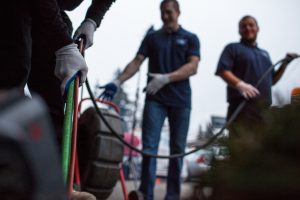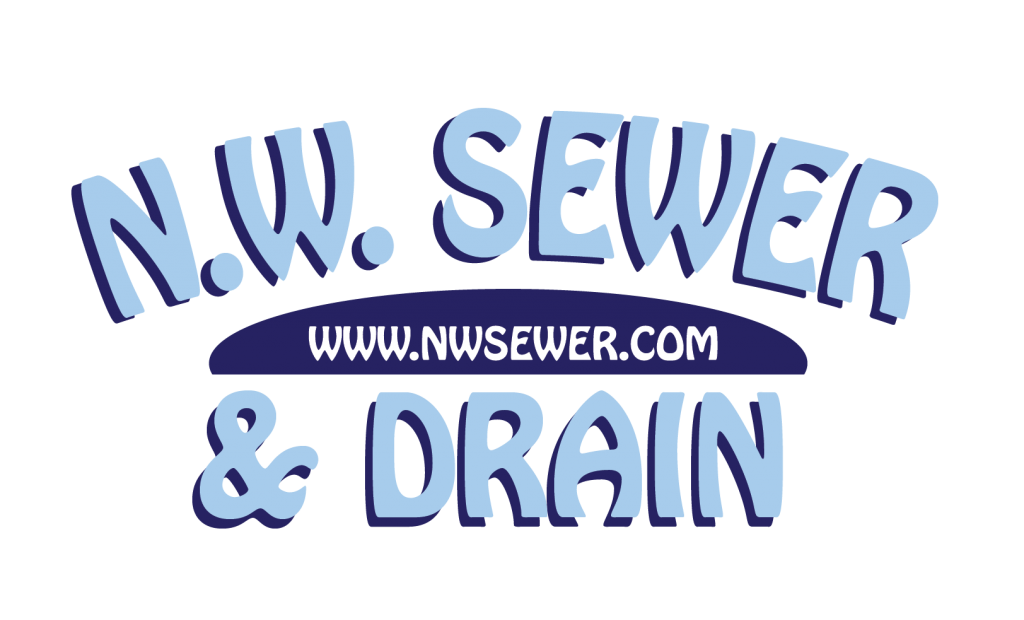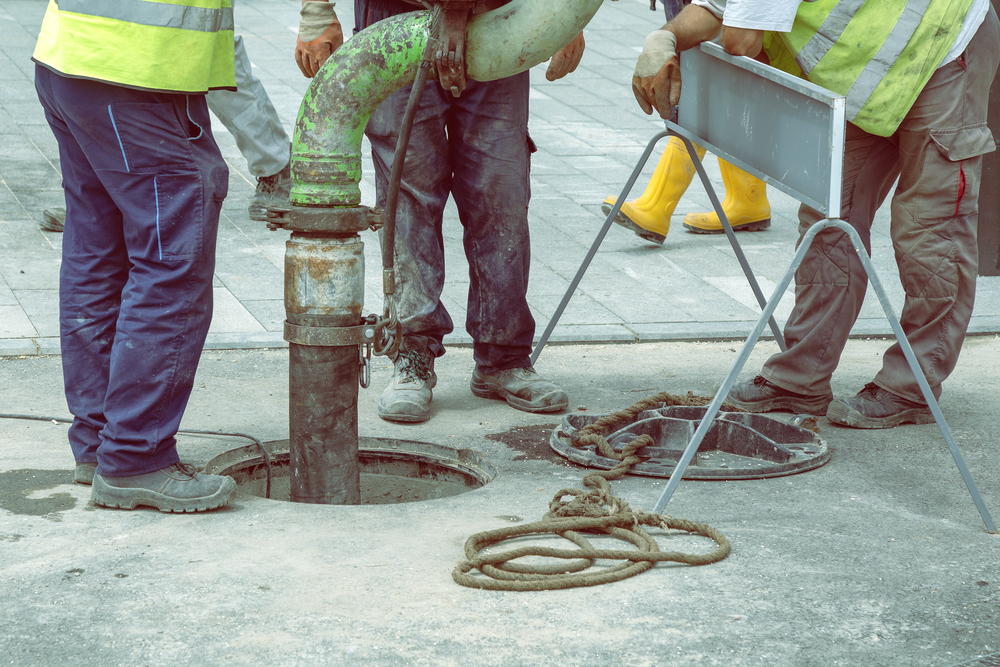When a simple plunger or snaking approach fails, the best approach to freeing up your clogged sewer line is hydro jetting. Hydro-jetting sewer lines is a plumbing technology that makes it easier to deal with lateral sewer obstructions, which saves you the trouble of excavating your front yard. When your sewer line is plugged, your home’s plumbing system is effectively inoperational. One of the big risks involved here is that a clogged sewer line can lead to sewage back up inside your home, which can be very costly to repair.
Your home’s sewer line connects your home to the street, where it meets up with the municipally owned sewer mainline. When your line (a private side sewer) can no longer deliver waste to the mainline, there are two methods commonly used to attempt to restore flow. One of these is the hydro jetting method. It is highly effective and less risky to the sewer pipes, especially if they’re old. At NW Sewer & Drain, we mostly prefer hydro jetting. We often remove roots in a 6” sewer pipe while working through a 4” cleanout or access point.
Indications that You Have a Problem with Your Side Sewer
Many signs reveal issues with your side sewer. Typically, before we begin any work, we will ask you questions to help us understand if it is a mainline sewer backup. This will also help us determine which clearing method would be best. Generally, here are the signs that indicate you have a problem with your private side sewer:

- Sewage is backing up into the lowest drain, like into a bathtub or shower.
- More than one drain is not draining.
- Running water in any faucet results in having water come up into the tub/shower or raises the water level in the toilet.
- Your drains are not draining or are very slow draining.
- The sewer is backing up and/or overflowing.
Additionally, we may inquire to know if any work has been done on your sewer line. A general rule of thumb is “The older the home, the higher the risk.” That’s because the older the home is, the older the pipes are. Many of the old sewer lines have gaps where one piece of pipe connects to the next.
So, What Happens Next?
If, after the initial inspection, we determine that your main sewer line is likely the cause of the problem, there are a few steps to take. If your line is problematic but still functioning, we usually start by recommending a scope or video (CCTV) inspection of your sewer line. This allows us to view the inside of your sewer line (pipes) to pinpoint the problems.
If repair is needed, we can electronically determine the precise location and depth of the damage. Scoping the line often lets us get a look at what is causing the problem. Here are some things that could be causing the blockage:
- Roots growing inside the sewer line.
- A soft blockage where the line is blocked up with large amounts of toilet paper or other soft debris.
- Out-of-grade plumbing, which eventually causes improper draining of water.
- Grease build-up.
- Scale that has formed inside the pipes
- Breaks in the sewer line, erosion holes, offset between pipe sections, collapsed pipe, or worn-out pipe. We have even found old sewer lines that were made of paper and pitch.
Rooter and Hydro Jetter Basics
The other method of dealing with difficult sewer backup is the rooter method. We either use the rooter or hydro jetter method to clear your private side sewer line. The rooter method incorporates a rotating spring steel wound cable with cutting heads. This cable rotates inside the sewer pipe, sweeping away debris and pushing through blockages. Larger rooters are usually electrically driven by motors.
The hydro Jetting method, on the other hand, employs highly pressurized water instead of a physical object to blast through clogs. We recommend a minimum of a 50-horsepower engine that produces 4,000 PSI at 18 Gallons per minute for a four-to-six-inch pipe. Underpowered jetters may not effectively cut through tree roots or clear your line if the clog is fairly large.
Why Hydro Jetting is Better Than Rootering
Hydro Jetting is the best alternative when rootering doesn’t work. Sewer lines are often backed up mostly because of “soft” items like toilet paper that collect inside the line and tree roots inside the sewer. A rooter simply stirs the soft blockage and just won’t clear the line. The hydro jetter approach uses high-pressure water and liquifies this soft blockage, blowing it further down the sewer line. Besides, hydro jetting is less risky as we use a camera that allows us to identify and focus on the precise location of the problem.
At NW Sewer & Drain, we have been in the sewer and drain business for nearly 20 years, using our years of experience to make the best recommendations. Our goal is to restore the flow of your sewer line so you can get on back to everyday life. If you’re dealing with a clog or would like to have your plumbing system cleaned out, hydro jetting may be the right solution for you. Call us today at 206-931-7728 to learn more.
Why Hydro Jetting is Effective for Clearing Clogged Sewer Lines
When standard methods like plunging or snaking don’t work, hydro jetting is the next best solution for clearing stubborn sewer line blockages. This advanced plumbing technique uses high-pressure water to clear obstructions, sparing you the need to excavate or dig up your yard. When a sewer line is clogged, it can cause your entire plumbing system to become inoperable, potentially leading to costly sewage backups inside your home.
Understanding Hydro Jetting for Sewer Lines
The sewer line from your home connects to the municipal sewer main at the street. When your private line becomes blocked and can’t send waste to the main, hydro jetting becomes an effective solution. This method is particularly useful for clearing debris, tree roots, and “soft” blockages that traditional tools may miss. At NW Sewer & Drain, we often prefer hydro jetting due to its effectiveness and minimal impact on old pipes. We can even tackle roots in a 6” sewer line through a 4” access point.
Signs You May Need Hydro Jetting
Here are some common indicators that suggest issues with your sewer line:
- Backups: Sewage backing up into the lowest drain, such as a shower or tub.
- Slow Drains: Water is slow to drain or affects multiple fixtures.
- Overflowing: Water overflows from drains when faucets run.
- Toilet Issues: Water rises in toilets when other faucets are used.
If you suspect a blockage, our team will conduct an inspection to confirm if the issue is in the main sewer line and recommend the best clearing method.
What Causes Sewer Line Blockages?
If a blockage is confirmed, we may perform a video (CCTV) inspection to understand the specific issue. Common causes of blockages include:
- Tree Roots: Roots growing into pipes.
- Soft Blockages: Accumulation of toilet paper or grease.
- Pipe Misalignment: Out-of-grade pipes leading to poor drainage.
- Pipe Damage: Collapsed, eroded, or broken pipes.
Rooter vs. Hydro Jetting: Which is Better?
Both rooter and hydro jetting are used to clear tough blockages. The rooter method uses a rotating cable to cut through debris, while hydro jetting relies on high-pressure water to flush out clogs entirely. Hydro jetting is often preferable for softer blockages and is gentler on old pipes. At NW Sewer & Drain, we recommend a jetter with at least 50 horsepower and 4,000 PSI for effective results.
Why Hydro Jetting is Superior
Hydro jetting is highly effective for clearing blockages, especially those caused by soft items like toilet paper. Unlike rootering, which may only partially remove clogs, hydro jetting flushes debris completely from the sewer line, reducing the chances of future clogs. Additionally, hydro jetting allows for pinpoint precision by using a camera to locate the blockage before clearing it.
At NW Sewer & Drain, with 20 years in the business, we have the expertise to recommend the best solutions for your sewer line needs. If you’re dealing with a stubborn clog, call us at 206-931-7728 to discuss hydro jetting and other options.
Frequently Asked Questions
What is hydro jetting in plumbing?
Hydro jetting is a method that uses highly pressurized water to clear clogs and debris from sewer lines. It’s a non-invasive technique that can remove tough blockages like tree roots, grease, and other obstructions without the need for excavation.
When should I consider hydro jetting for my sewer line?
Hydro jetting is ideal when traditional methods like plunging or snaking fail to clear a clogged sewer line. It’s effective for long-term blockages caused by debris, grease, and tree roots, especially in older pipes.
How does hydro jetting work?
Hydro jetting works by blasting high-pressure water through the sewer line, which clears away debris, tree roots, and soft blockages like toilet paper. The water pressure effectively breaks apart and flushes obstructions down the line.
What are the benefits of hydro jetting over other methods?
Hydro jetting is more effective at clearing soft blockages and is less likely to damage older pipes. Unlike rootering, which may not fully remove clogs, hydro jetting completely flushes out debris, reducing the chance of future clogs.
Is hydro jetting safe for old pipes?
Yes, hydro jetting is safe for most old pipes when performed correctly. Unlike rootering, which can be abrasive, hydro jetting uses water to clear blockages, making it a gentler option for aging pipes.
What are the signs of a clogged sewer line?
Signs of a clogged sewer line include sewage backups in the lowest drains, multiple drains not draining, slow draining water, and water rising in the toilet when faucets are used. These indicate that the sewer line may be blocked.
How often should I have my sewer line cleaned?
It’s recommended to have your sewer line inspected and cleaned every 1-2 years, especially if you have an older home or trees near your sewer line that may cause root intrusions.
Can hydro jetting remove tree roots from my sewer line?
Yes, hydro jetting is highly effective at removing tree roots from sewer lines. The high-pressure water can cut through and dislodge tree roots without damaging the pipe, unlike some traditional methods.
How long does hydro jetting take?
The time required for hydro jetting depends on the severity of the blockage and the length of the sewer line. Most residential hydro jetting jobs can be completed within a few hours.
What should I do if hydro jetting doesn’t work?
If hydro jetting doesn’t clear the blockage, it may be due to a more severe issue like a collapsed pipe or structural damage. In this case, further inspection with a sewer camera or pipe repair may be needed.




